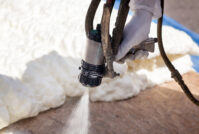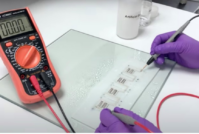look what we did!
Category: Architecture, Environment
Polyurethane Helps Create Resilient, Green Building Products
During the past decade, consumers moved towards eco-friendly products. However, today, it is not enough simply to have environmentally sound offerings, a company’s products have to be resilient as well, meaning they have to be able to stand up to the elements.
Nowhere is this more important than in the construction industry, where designers, policymakers and engineers face the difficult task of rebuilding in areas prone to natural disasters like hurricanes and flooding.
With a renewed focus in the construction industry on creating energy efficient and durable products that are also resilient, there is an interest in products like closed-cell spray polyurethane foam (ccSPF), which insulates roofs, walls and many other structures in the commercial and residential building market.
ccSPF acts as thermal insulation, an air barrier, and a moisture barrier. Because it adheres strongly to the substrate, it can also help hold construction materials together. The material provides insulation and air-sealing properties for an entire building envelope, resulting in energy savings for the consumer and a smaller carbon footprint, which is better for the environment. Perhaps best of all, ccSPF is a Class 5 FEMA Flood Damage-Resistant Material, which authorities describe as being “highly resistant to floodwaterdamage” and “can survive wetting and drying and may be successfully cleaned after a flood to render them free of most harmful pollutants.”
Creating resilient construction materials that are also conscious of the environment may be the biggest challenge facing product designers today. Thankfully, with more than a decade of green design innovation to look back on and guide them, a new generation of product designers now stand on the precipice of innovation.

























